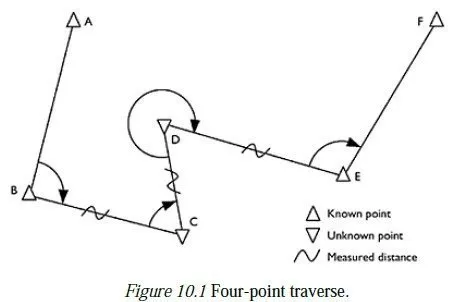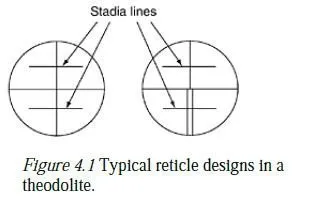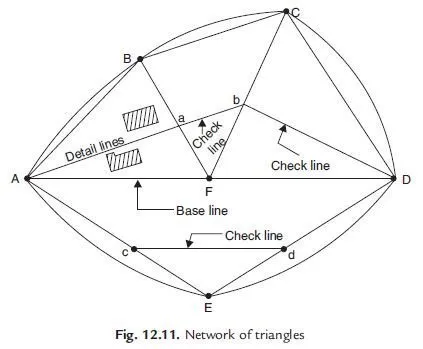After fixing the table top to the stand and drawing sheet to the table, the following operations are to be
carried out before map making:
1. Centering
2. Levelling
3. Orientation.
14.2.1 Centering
Centering is the process of setting the plane table on the point so that its plotted position is exactly over the position on the ground. This is achieved by moving the legs of the tripod and checking the position of the point on the ground and on the paper with the help of plumbing fork and plumb bob.
14.2.2 Levelling
The level of the plane table should be ensured in two positions of spirit level which are at right angles to each other. The legs of tripod are moved radially or along the circumference to adjust the plane table and get levelled surface.
14.2.3 Orientation
Orientation is the process of setting plane table over a station such that all the lines already plotted are parallel to corresponding lines on the ground. Accuracy of plane table survey mainly depends upon the
accuracy of orientation of plane table at each station point. It can be achieved by any one of the following methods:
(a) using trough compass
(b) by back sighting
(c) by solving two point or three point problems.
The first two methods are commonly used while the third method is used occationally. The third method is explained under the article methods of plane tabling by resection.
(a) Orientation Using Trough Compass: When the survey work starts, the plane table is set on first station and the table is oriented by rough judgement such that the plotted position of the area falls in the middle portion of the paper. Then the table is clamped and the north direction is marked on right hand side top corner of drawing sheet. Trough compass is used to identify north direction. This orientation is to be maintained at all subsequent stations. After centering and levelling the table trough compass is kept along the marked north direction and the table is rotated to get freely suspended magnetic needle centred. After achieving it the table is clamped.
This method of orientation is considered rough, since the local attraction to magnetic needle affects the orientation. This method is used as preliminary orientation and finer tuning is
made by observing the already plotted points.
(b) Orientation by Back Sighting: It is the commonly used method in plane table surveying.
After completing surveying from plane table set at A, if table is to be shifted to next station B, a line is drawn from the plotted position of station A towards station B. Then distance AB is measured, scaled down and plotted position of station B is obtained. Then table is shifted to station B, centred, levelled. Then keeping alidade along BA, station A is sighted and the table is clamped. Thus the orientation of the table is achieved by back sighting. Orientation may be checked by observing already plotted objects.




very good